Hey! Thanks for sticking around for Rent’s Due. I promise the next piece is a lot shorter, but definitely weirder. Enjoy!
I love comics. It’s something that becomes glaringly apparent when someone meets me to possibly an annoying degree. While comics will always hold a special place in my ever-consooming heart, there’s a part of me that is more invested in how a book gets made more than the actual book itself.
The steady intake of extensive biographies like Marvel Comics: The Untold Story and Cartoonist Kayfabe videos in my life recently have made me think differently about comics today. How the industry has both grown and plateaued even at a time when superheroes, their flagship genre, dominate other facets in media. It’s probably harder to make your own comics today when you don’t have as many indie publishers during times like the B&W movement, and yet it’s also pretty easy to put them on Twitter or your very own Substack and gain a following. You can probably land a gig writing a widely-prominent book like Amazing Spider-Man, but still get your ideas squandered by an editorial team the second you want a put a wedding ring back on Peter Parker.
There’s decisions made everyday from a creative and corporate level that shape the business into what it is today. I find it fascinating when I can look back at what books were like in the past and presume how they played a part in the industry’s future. While there’s definitely a mountain of books that I can argue about this with, I figured I’d start with something that’s relatively simple. Like these Marvel 25th Anniversary covers from 1986.
You might be wondering, Dear Reader, that a bunch of portraits released more than 30 years ago don’t have much to say about what Marvel Comics would become. A sentiment that I have to push back on with more than just barking back “nuh-uh you’re wrong” and pretending like I didn’t say anything.
When you grow up reading a bunch of comic books (in this case superhero titles) you start to notice some trends and strategies with a lifespan that fluctuate depending on how readers react. Sometimes you get an initiative that strengthens the market like a New 52, and sometimes you get that one massive crossover out of the other 25 during the year that’s just so bad that it taints the company’s legacy (Ultimatum). There are a variety of decisions from Marvel that can be traced back to what worked for them decades ago, and to me, there’s no point in time that was more momentous for Marvel and the rest of the modern landscape than 1986.
It’s easy to assume that if you ask any historian what was the most important year in the history of the medium, many would make a case for 1986. The year when titles like Dark Knight Returns, Watchmen, and Maus exploded onto the scene, resulting in a massive spike of mainstream interest. Comics were not only seen as an art form comparable to traditional literature, they were also events that urged your ass to cough up whatever change you had that Wednesday and buy the newest issue of the newest hotness.
Marvel at the time were at an interesting point in their history, having just been sold to New World Pictures and relishing in their creative and financial success like Frank Miller’s Daredevil and Chris Claremont’s various X-Men titles. So when the month of November came by, the staff at the House of Ideas thought it would be a good idea to capitalize on this new wave of attention by releasing special covers that celebrated the company’s 25th anniversary. The funny thing about that was they were actually 47 years old at the time; The 25th anniversary moniker was in reference to the company’s release of Fantastic Four #1, which kinda makes sense except when it doesn’t. The result was the image seen above, a time-capsule for the best and worst to come from the company.
When in doubt, sell some spiders.
I’ll get this out of the way as quickly as possible: I think that most of the art here is fine. The border by the GOAT John Romita is still a memorably nostalgic lineup of what the Marvel’s best output (lots of X-Men! Thing with New Shirt!). It’s paired well with the strongest covers that give you just a taste of the vibe you’ll get before opening it, like the glooming shadow of war in Walt Simonson’s Thor or the broodiness of Ann Nocenti’s first stint on Daredevil. Some are cool illustrations done by people who definitely had more of a preference for one book than another1. Others are solid work from work-horse veterans like Steve Lightle’s take on a Ditko-era Spidey, and one’s just a thrown-in logo with no artist credit cause sure why the fuck not it’ll sell cause Spidah-Mahn?
And yet, when I look at this lineup of books, it’s easy to spot some details that still remain today as constants for the industry’s lifeline, one of which being the ironclad faith in selling anything Spider-Man and X-Men.
We had a total of nine books that were released that month from both franchises2, and its clear back in ‘86 that there was a cultural divide between what audiences wanted and what editorial wanted. While there were certainly people clamoring for an older Peter Parker going through his symbiote era3, there were also people who wanted a title like Sensational Spider-Man, a series that reprinted older stories of a younger, less experienced web-head. This doesn’t seem like a big deal for the time, but it’s hard to not see something like this and think about how successful Ultimate Spider-Man by Brian Michael Bendis was for newer audiences, who wanted to read a character their age; or how devastating it was for veteran Peter/MJ supporters to get their hopes continuously broken in a post-One More Day timeline.
That feeling is practically twice as obvious when you pit Uncanny X-Men and X-Factor against each other. If you wanted a team book with new faces and some fan-favorites, you read Uncanny. If you wanted the same lineup you’d been following since the early 60s, you read X-Factor. While the franchise faced far worse creative problems that nobody would’ve anticipated then (i.e. the incessant push for all things Inhumans over mutants in the 2010s), it’s clear that editorial team were conflicted with wanting to go off in wilder directions and wanting to stay the course to something more traditional. You can see this now with the impending end of the Krakoa era this year4, as books like FHOX/RPOX(?) are gearing way to new editorial leadership in what seems like a shift back into normalcy. If one thing’s for certain: it’s that Marvel will always sell more Spidey and X-Men books, no matter what people will ask from it. Those books have a steady readership more faithful than a dog and a stick. Whether those books move the needle to bring in new readers and go in newer places is a future that’s never truly set.
Behold… a New Gimmick
Something that’s just as prevalent as conflicting creative directions for established titles is the consistent urge to build a wider portfolio. It makes sense. You don’t get to having 30% of the market share if you don’t have much to offer. Sometimes that means expanding your audience demographic by investing in licensed IP, and sometimes that means making a big swing in something totally new, hence the New Universe cover Marvel Age #44. Ah, the New Universe. They’re somewhat of a punchline today, a lineup of books that didn’t take place in the regular universe and spearheaded by controversial Editor-in-Chief at the time Jim Shooter. The books just never clicked with mass audiences, and are seen as a company failure buried in obscurity (save for some deep-cut reference in some Kevin Smith podcast here and there).
Looking at this cover, yeah I can see why lol. The cover is just Some Guy with a finely-tuned bowl cut, with a cool star emblem placed above him. A book’s cover is the first thing new readers see, and when there’s nothing about the character or setting that’s particularly eye-catching, you’re already swimming upstream for a place in the pack. The funniest thing about this cover isn’t the front itself, however, it’s what shown at the back cover of it.
It’s not to say that company reboots and imprints don’t work, though. From the aftermath of the industry’s fall in the late-90s, we got really great projects like Marvel Knights and the Ultimate Universe line that were critically and financially hits for the time. In the case of the New Universe, it wasn’t much about what they had, but how they marketed it.
As for Marvel’s licensed products, which included popular 80s cartoons like Ewoks, Masters of the Universe, Transformers and G.I. Joe, they serve as a reminder that sometimes you gotta milk the cow for all its worth. Those four examples I gave were staples of every kid growing up at the time, so it makes perfect sense to capitalize on those shows by making comics about them. Did that mean you’d be getting a quality product? I can’t seriously give an answer to that for an Ewoks book. But it probably didn’t matter! Kids had something to read and something to hook onto, and for a retailer, that almost definitely meant a customer for life. Hopefully not for just Ewoks5, but for other books that catch their eye as well. Also, I’m not saying that all these books were all bad because they were for kids or babies (Muppet Babies in one case). Anyone who’s read an issue of Larry Hama’s incredible (still ongoing!) run on Joe would tell you it’s one of the best licensed books ever made. But of course, nothing lasts forever. Marvel would eventually lose the rights their licensed titles save for Star Wars, which, not much needed to be said there.
State of Future Past
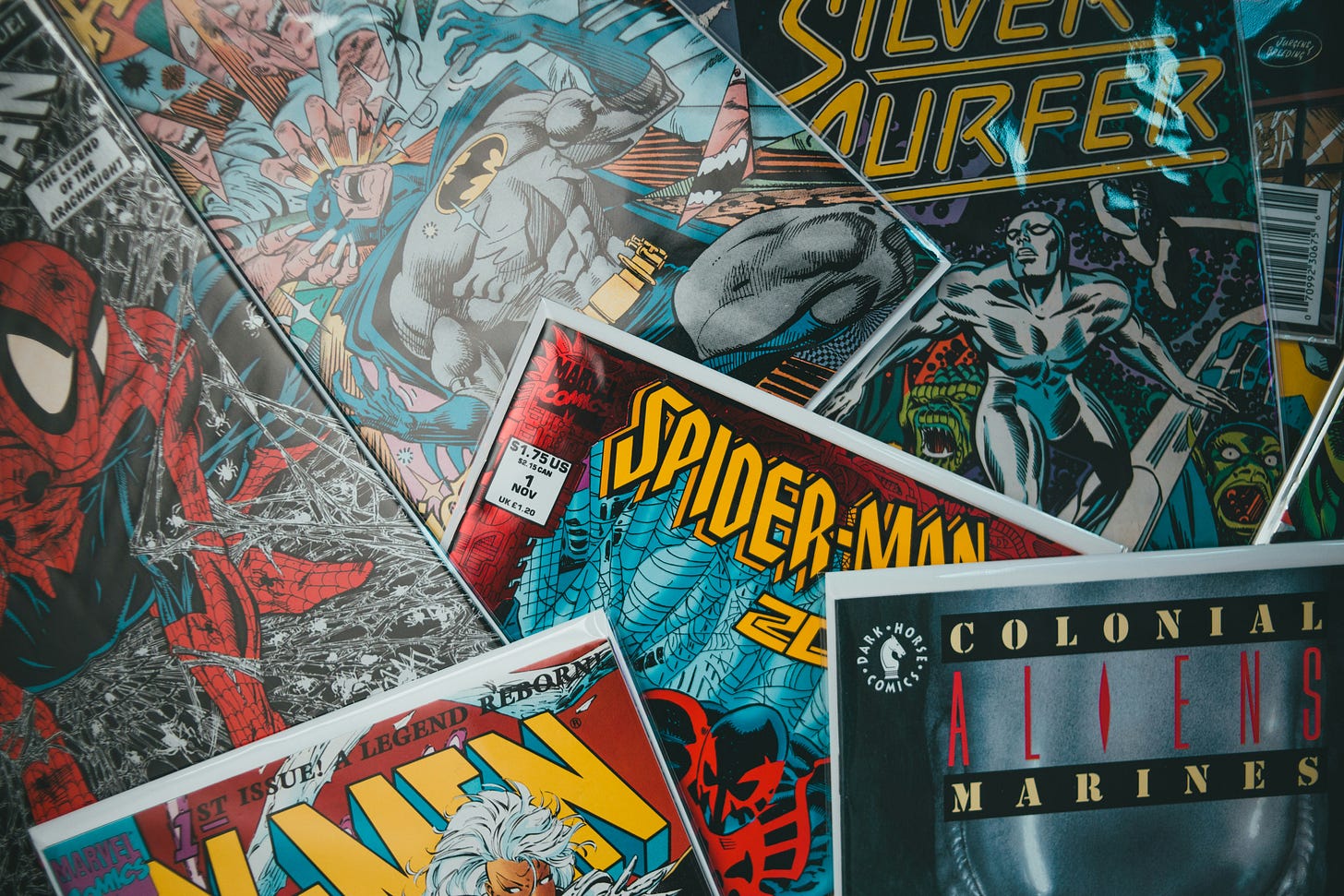
The comic book industry will never in the same state that it was in the late 80s-early 90s. The bubble was real, and people jumped onto it for as long as they could until it popped. When I look at these covers, I see what was at the time less of a fun experiment and more of a harbinger of things to come. The age of variant covers and over-saturation were in full swing after this, and while it did lead to some record-breaking successes like Todd MacFarlane’s Spider-Man #1 and Claremont and Jim Lee’s X-Men #1, it also brought about a market that just couldn’t sustain itself. That wasn’t made any more glaring for Marvel when the market crashed in the mid-90s, and the company had to file for bankruptcy in 1996. Ten years after these covers were made.
Have things gotten better? Yes but no (it depends). But it’s safe to say that comics will never be like it was in 1986, and that’s fine. The industry doesn’t need to revert back to what it was before, and instead continue to work on things that’ve helped them get through the crash in the first place. Figuring out how to save the comics industry is a complicated topic that has no definitive answer, but it’s important for us to learn from the past in order to better understand our future. If not, it’s only a matter of time before we get another coconut-headed glup shitto like Star Brand.
Barry Windsor-Smith draws a beautiful Magik for New Mutants, but probably wasn’t going to give Marvel more of his own energy with a portrait of the Thing that shows more of his detailed style.
Ten if you count Spider-Ham as a Spider-Man book, despite the porkish complexion.
A trend we’re currently seeing a variation of today with Jonathan Hickman’s Ultimate Spider-Man reboot.
Even as someone who really liked that time in X-Men (HOX/POX are incredible reads), you couldn’t pay me enough to explain all the shit that happened there.
Sincerest apologies for the Ewok slander I will do better.





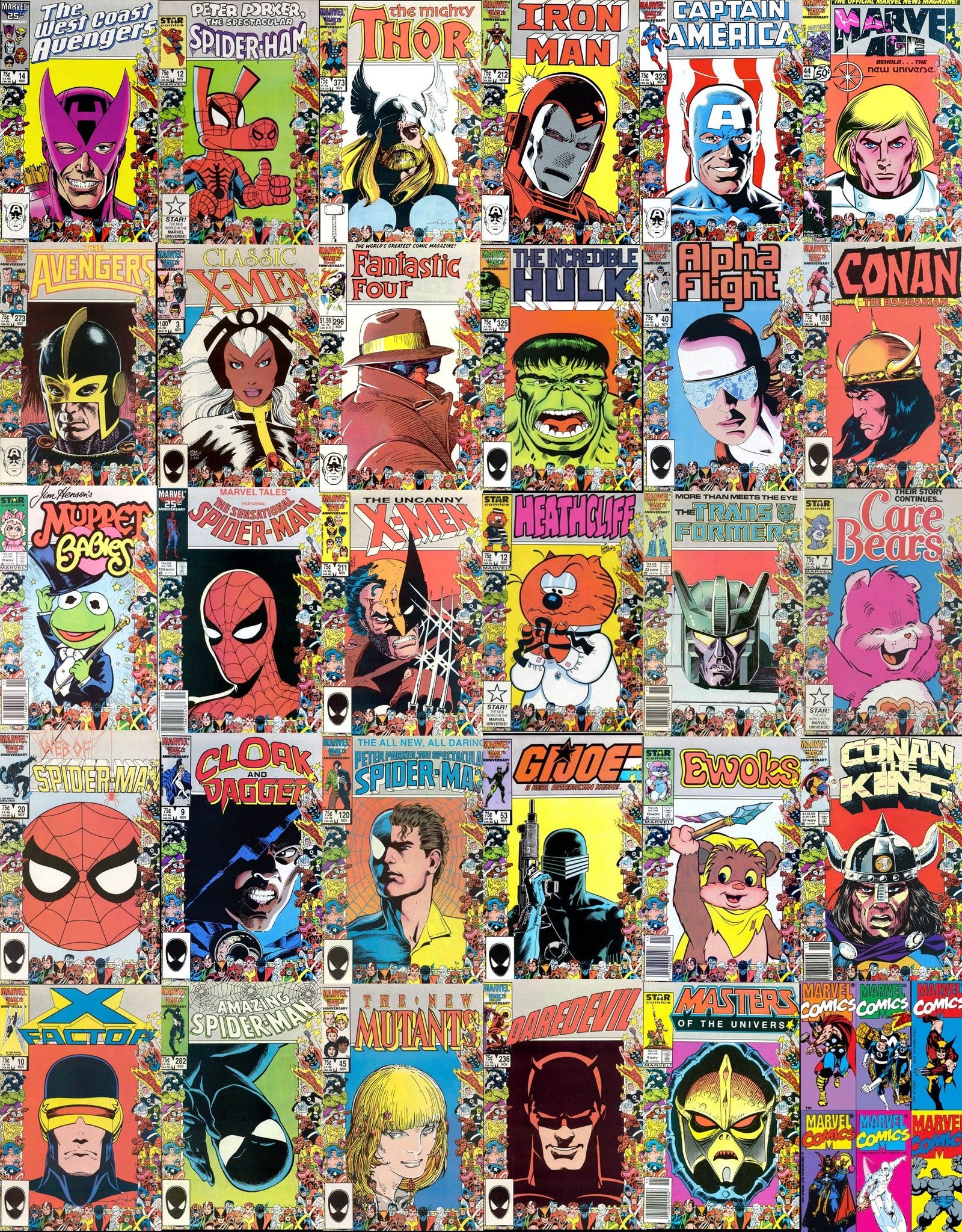
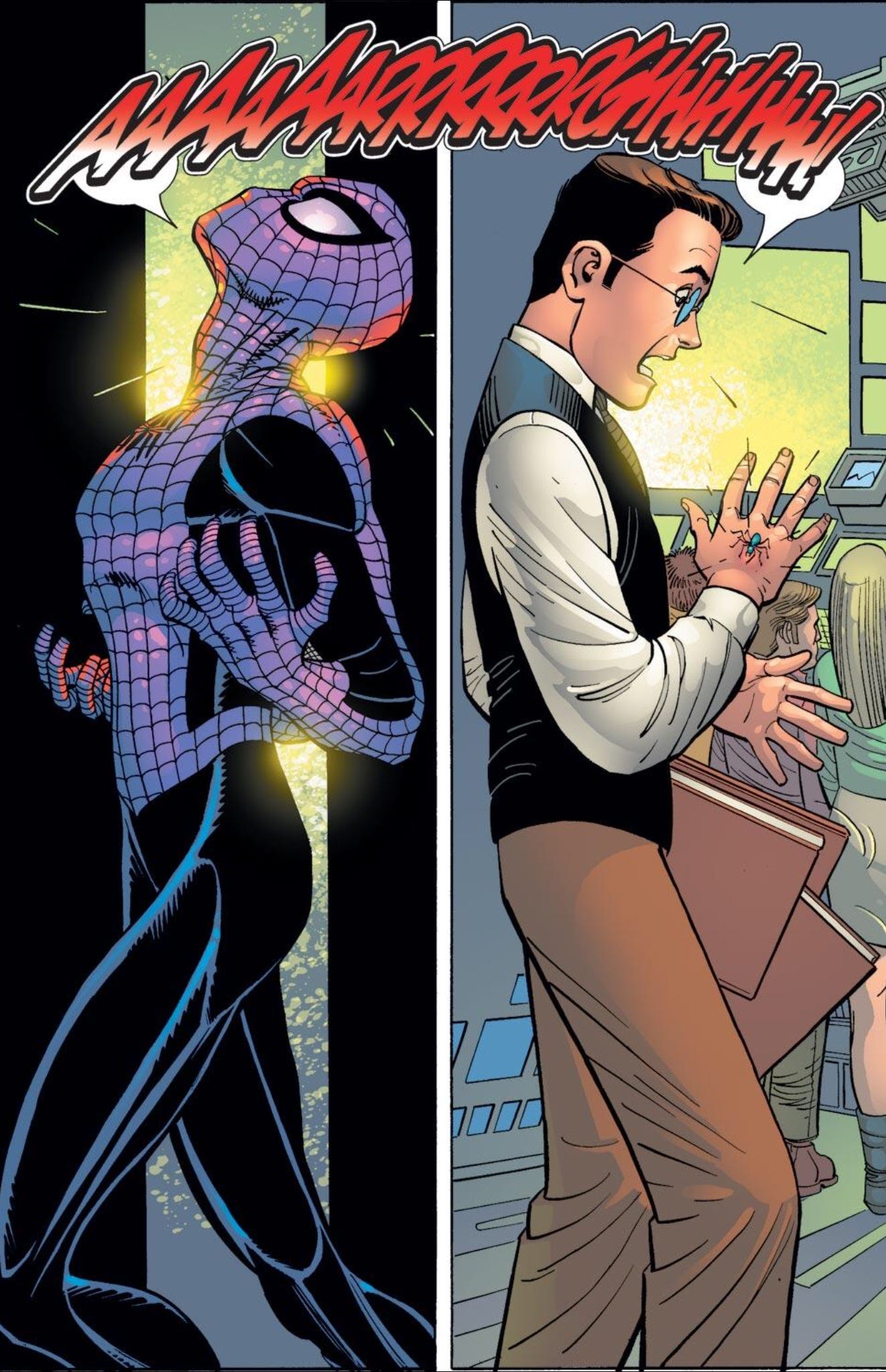
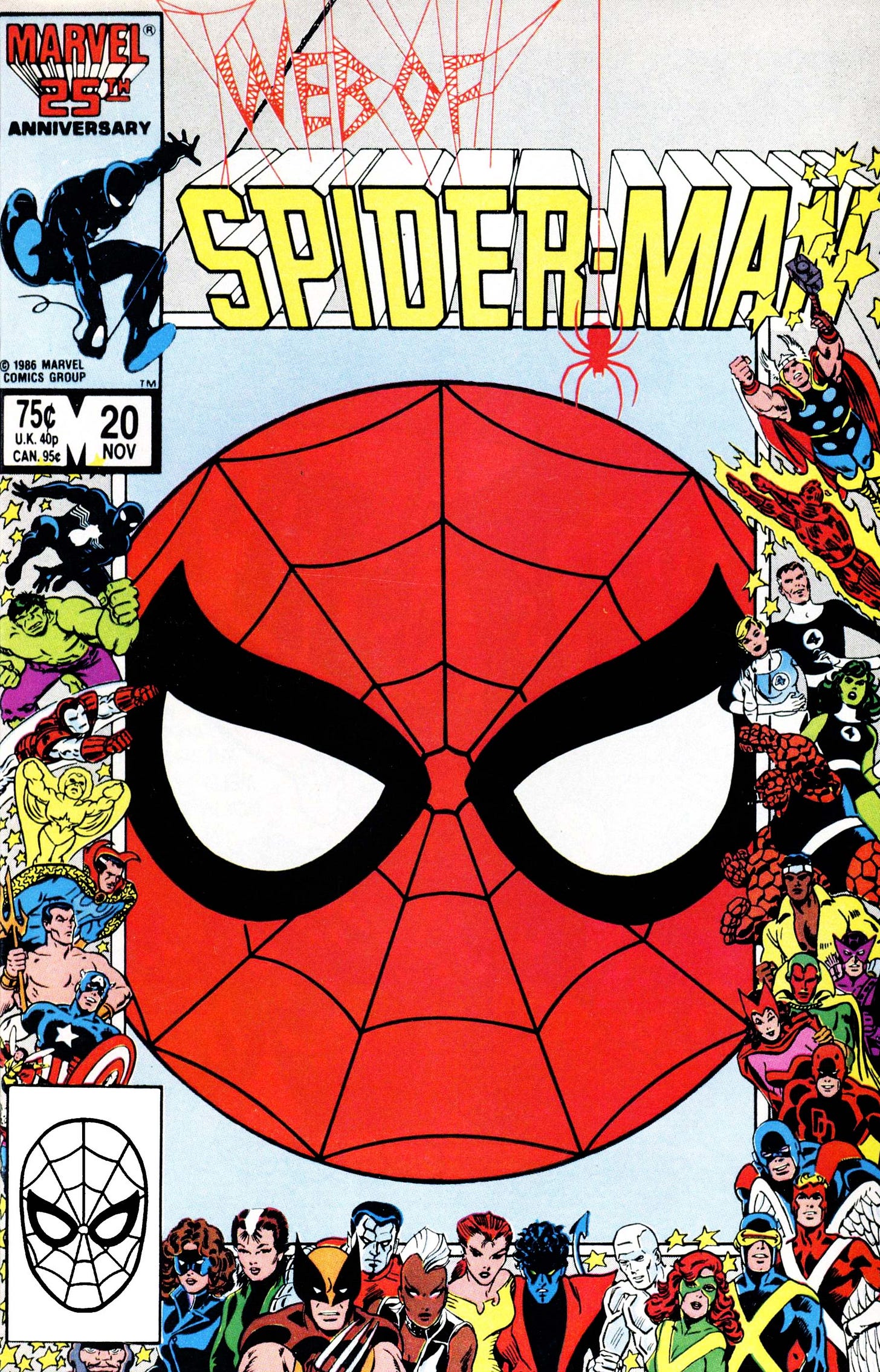
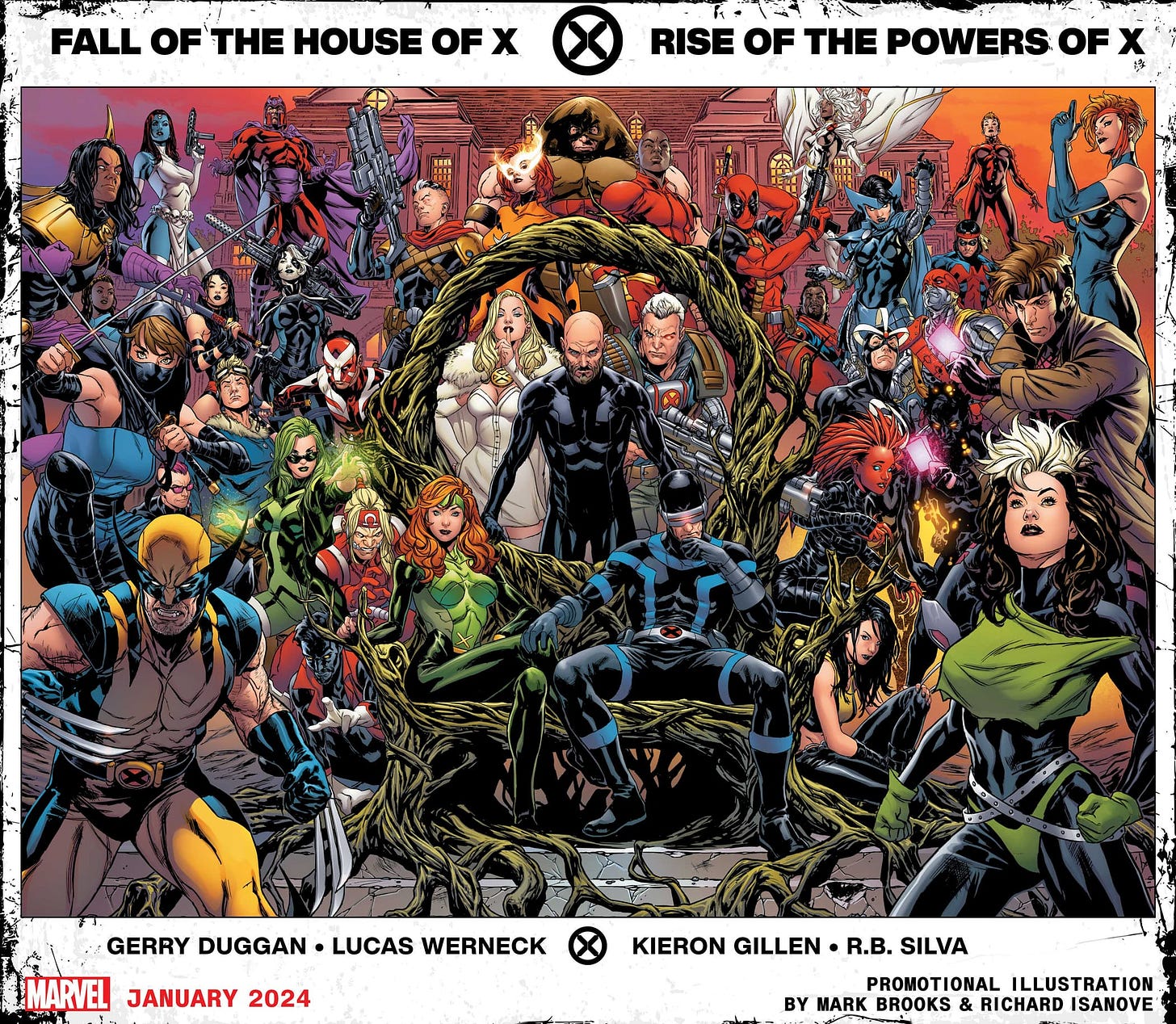
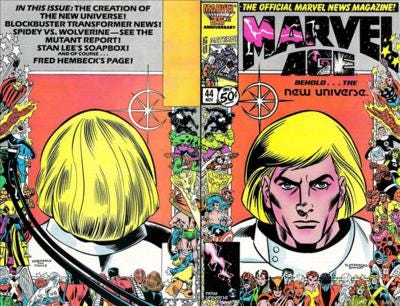
This was a cool read! I don't know anything about comic books, but I'm going to try to send this to my friend Stephen. (He's the friend I do the podcast with) He's a big comic book fan.